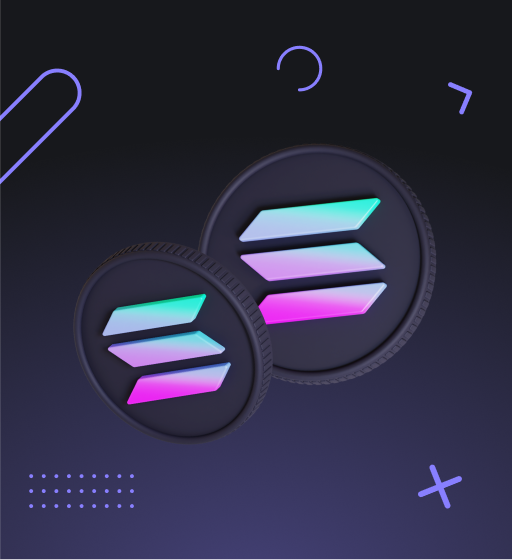
Decentralized finance (DeFi) is one of the fastest-growing areas of cryptocurrency, offering new ways for traders to earn yields on their assets. One key development driving profits in DeFi is yield aggregators, also called "auto-compounders" or "yield optimizers." This guide will explain what yield aggregators are, how they work, the potential profits, and risks to understand if it’s a good option for your trading strategy.
What is Yield Farming?
Before getting into yield aggregators specifically, it helps to understand the concept of yield farming that they leverage.
Yield farming allows cryptocurrency traders and investors to earn rewards by moving their tokens into yield-generating DeFi protocols. These are smart contracts that incentivize the locking up of funds in liquidity pools to facilitate decentralized trading.
For example, automated market maker (AMM) protocols like Uniswap allow people to trade tokens in a liquidity pool rather than using an order book with buyers and sellers. Liquidity providers (LPs) add an equal value of two paired tokens, like ETH and USDC, to earn a portion of the trading fees based on their share of the pool.
As an incentive to provide liquidity, these protocols distribute governance tokens that allow LPs to vote on changes. Early liquidity providers may get especially high yield farming rewards during a project’s bootstrapping phase.
The distribution of governance tokens on top of trading fees for being an LP gave rise to the concept now known as yield farming. Participants "farm" rewards by moving their assets around DeFi protocols to earn the highest yields possible.
What Are Yield Aggregators in DeFi?
Yield aggregators are sets of smart contracts that automate yield farming across multiple DeFi protocols. They combine investor's crypto assets into strategies optimized for earning profits.
In other words, yield aggregators pool funds from many users and determine the best opportunities to invest those assets based on factors like:
- Annual percentage yields (APYs)
- Risks
- Ideal deposit sizes
The smart contracts then automatically yield farm, compound earned interest, claim rewards, and redistribute everything for maximized gains.
Think of yield aggregators like robo-advisors for decentralized finance. Users deposit their tokens and the algorithms handle yield farming for passive income. This saves traders time and gas fees compared to manually moving assets around.
Some popular yield aggregator platforms include:
- Yearn Finance: Ethereum-based vaults for yield optimization across lending, liquidity pools, and more
- Convex Finance: Boosts rewards for CurveFinance LPs
- Harvest Finance: Yields through automated compound interest farming
There are now yield aggregators across different blockchains like Solana, Avalanche, and Polygon too. While the protocols vary, they aim to simplify DeFi earnings.
How Do Yield Aggregators Work?
Yield aggregators use automation to combine assets from many users and determine the most profitable yield farming opportunities. This behind-the-scenes process involves strategies like:
Providing Liquidity to DEXs
As mentioned earlier, being a liquidity provider (LP) to a DEX liquidity pool can earn trading fee rewards. However, to compound gains, LPs need to manually harvest and reinvest those small dividends frequently. This costs gas fees each time that eats into profits, especially for small deposit sizes.
Yield aggregators solve this by pooling funds across many LPs, allowing them to automate compounding at optimal intervals. Instead of claiming rewards yourself every day or week, the smart contracts handle harvesting and reinvesting to maximize APY.
Staking LP Tokens in Farms
Another key yield farming approach is staking LP tokens earned from DEX liquidity pools into incentive farms.
For example, if you supplied equal ETH and DAI into Uniswap to mint UNI-V2 ETH-DAI LP tokens, you could then stake those LP tokens into a Yearn yvBOOST vault. This rewards you with more ynBOOST governance tokens over time through auto-compounding.
Again, yield aggregators handle automatically compounding across the best yield opportunities to save gas fees and ensure profits are reinvested quickly. Staking rewards that may have diminishing returns if claimed manually can continue accruing at an optimized rate.
Auto-Compounding Vault Strategies
Some yield aggregators like Yearn Finance offer auto-compounding vaults. These smart contracts automatically harvest any farming rewards and compound the yields frequently, like every few minutes.
By enabling continuous compound interest, investors can earn significantly higher APYs versus manual strategies. Auto-compounding vaults reinvest both the original capital as well as any earned interest or rewards back into the protocol.
For stablecoin deposits, this auto-compounding effect can drive impressive double-digit yields upwards of 20% APY.
The Benefits of Yield Aggregators
As you may have gathered, yield aggregators offer a variety of benefits for cryptocurrency traders looking to earn passive income. Some of the main perks include:
Automated Yield Farming
The algorithms built into yield aggregators remove the need to manually harvest farming rewards, swap tokens, or reinvest. This saves significant time and gas fees.
Auto-Compounding Yields
By automatically compounding interest frequently, yield aggregators maximize annual percentage yields. This effect generates significantly higher returns versus manual compounding.
Diversified Yield Opportunities
Aggregators invest across multiple yield opportunities to reduce risks and optimize gains. Platforms like Yearn offer stablecoin vaults, liquidity pools, token staking, and more.
Low Barrier to Entry
Users don’t need deep technical expertise in smart contract strategies to benefit from auto-compounding and aggregation. The platforms simplify yield generation.
Passive Income
Once deposited, users can sit back and let the yield aggregators optimize farming rewards automatically. It becomes easy for passive income generation.
For cryptocurrency HODLers and traders already speculating on token prices, yield aggregators present a compelling way to earn additional returns while waiting. The key is selecting reputable platforms to avoid risks.
Risks to Consider with Yield Aggregators
While DeFi yield aggregators can generate lucrative profits, they also come with inherent risks to consider. As with any hot new crypto trend, scams and "rug pulls" are a real threat. Beyond that, even well-intentioned platforms carry risks like:
Smart Contract Bugs
Coding vulnerabilities could allow assets deposited into yield aggregators to be lost or stolen. Extensive auditing helps mitigate this, but bugs still occur.
Liquidity Risks
If trading volume and liquidity drop significantly across DeFi protocols utilized by a yield aggregator, earnings potential could plummet. Users may earn high APYs initially that prove unsustainable.
Token Impermanent Loss
For liquidity providers, major shifts in the price ratio between paired assets can lead to impermanent loss. Yield aggregators that auto-compound LP tokens cannot prevent this.
Admin Keys Risk
Some yield aggregator platforms have admin keys that could hypothetically give a small group of insiders control to steal funds. Reputable projects utilize time-locks and audits to reduce this threat.
Regulatory Uncertainty
As with much of cryptocurrency, the legal and compliance status of these DeFi yield aggregators remains unclear. Regulatory risks could threaten platforms.
No yield aggregator can eliminate risks entirely. However, utilizing established platforms like Yearn Finance that implement locks, audits, and overcollateralized lending helps reduce vulnerabilities.
5 Tips for Maximizing Profits with Yield Aggregators
If you decide yield aggregators align with your investing strategy, here are 5 tips to optimize your returns:
1. Review Audit Reports and Admin Keys
Choose yield aggregators that implement audits, admin key locks, and formal verifications to reduce smart contract risks.
2. Monitor Earning Rates Closely
Keep an eye on advertised APYs versus actual yields earned. Shifting market conditions change rewards.
3. Use Stablecoins for Lower Risk
Stablecoins like DAI and USDC carry less volatility risk compared to tokens like ETH or SOL when supplied to liquidity pools.
4. Compare Platform Fees
Admin fees between yield aggregators vary. Compare rates to determine the best risk-adjusted returns net of fees.
5. Utilize Governance Rights
Some platforms issue governance tokens allowing users to vote on protocol changes. Participate to guide the project’s direction.
The cryptocurrency market cycles between periods of high hype and periods of disinterest. By paying attention to rewards data and governance rights, traders can strategically move funds between yield aggregators to optimize earnings in all conditions.
FAQs About DeFi Yield Aggregators
What is the difference between APR and APY?
APR stands for annual percentage rate. It reflects the simple interest rate over one year without compounding.
APY stands for annual percentage yield. It includes the effect of compound interest to show the total amount earned including reinvested interest from a deposit over one year.
Since yield aggregators auto-compound frequently, they can advertise very high APY rates. Make sure to verify actual yield returns net of fees.
Are yields from aggregators sustainable long-term?
Yield aggregators optimize opportunities across different DeFi protocols in a fast-changing landscape. Some platforms leverage incentives when bootstrapping adoption that later drop. Others rely on trading fees that fluctuate based on volume.
In general, yields above 10% should be viewed as unsustainable in the long run. However, by automatically moving assets across platforms, yield aggregators can maintain solid risk-adjusted returns over time.
What blockchain networks are supported?
The majority of yield aggregators currently run on Ethereum, including leaders like Yearn Finance and Convex Finance. This allows interoperability with DeFi protocols like Uniswap, Compound, Curve, etc built on Ethereum.
However, platforms are now launching across additional layer 1 blockchains too. Solana, Avalanche, Polygon, Fantom, and more all offer their own yield aggregators optimized for assets on those networks.
Do I need to pay gas fees?
Yes, interacting with yield aggregators requires paying network gas fees for deployment transactions. These include approval to access tokens, depositing assets, withdrawing earnings, and claiming governance token rewards.
That said, aggregators save on cumulative gas transaction costs over time by not needing gas for manual compounding and swapping compared to self-managed yield farming.
What risks should I watch for?
Smart contract risks pose the largest threat to funds deposited in yield aggregators. Extensive audits and formal verifications help, but bugs still occur in DeFi regularly. Be vigilant for extreme promised APYs which may signal Ponzi-like returns.
Value fluctuations in staked tokens or provided liquidity can also undermine yields through impermanent loss. Check whether platforms offer insurance funds as a backup.
Key Takeaways and Conclusion
- Yield farming lets cryptocurrency traders earn rewards by supplying assets to DeFi protocols
- Yield aggregators automate yield farming across platforms for easier profits
- Leading benefits include auto-compounding yields, passive income, and diversified opportunities
- Risks to watch include smart contract bugs, token valuation changes, and liquidity shifts
- Monitor reward rates, utilize governance rights, and compare fees across platforms
DeFi yield aggregators present a hands-off way for cryptocurrency investors to put their assets to work earning yield rather than just speculating on token prices. With billions of dollars now supplying liquidity and staking across Ethereum, Solana, and other DeFi ecosystems, yield aggregation stands poised for continued growth.
By selecting reputable yield aggregators, traders can compound their crypto portfolio returns through automated yield farming. Just be sure to monitor performance actively, manage risks, and spread deposits across protocols.
This concludes our comprehensive guide to maximizing profits with yield aggregators! Let us know if you have any other questions.







